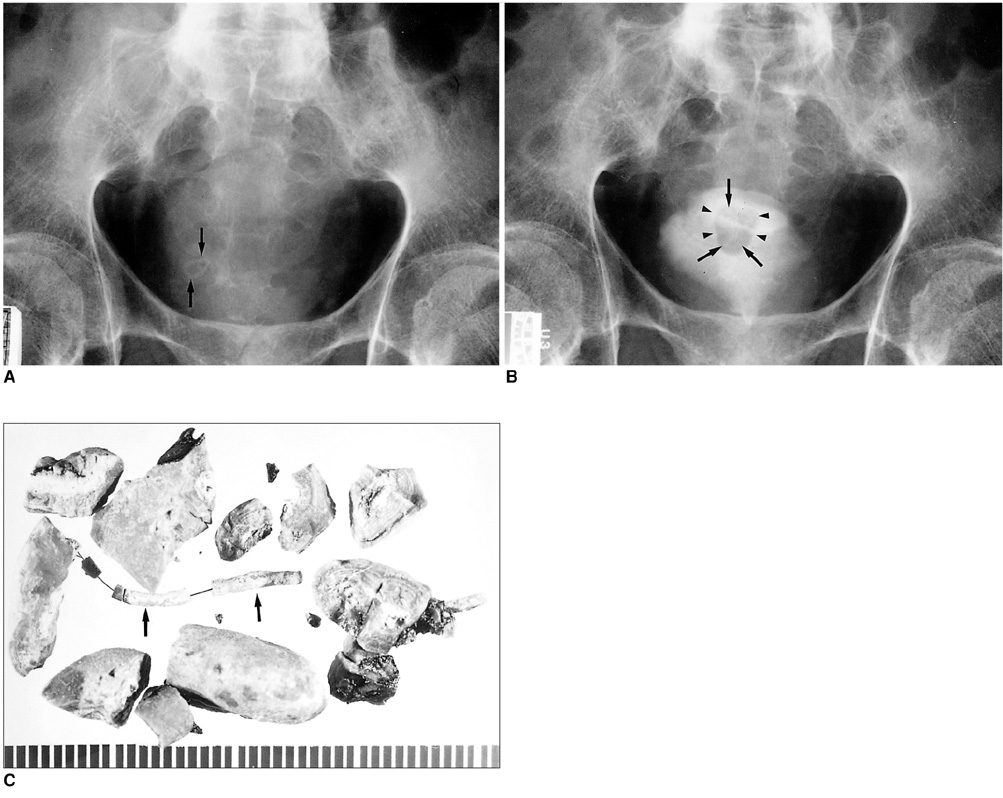Korean J Radiol.
2001 Mar;2(1):61-62. 10.3348/kjr.2001.2.1.61.
Characteristic Plain Radiographic and Intravenous Urographic Findings of Bladder Calculi Formed over a Hair Nidus: A Case Report
- Affiliations
-
- 1Seoul Natl Univ Hosp,Dept Radiol Clin Res Inst Chongro Gu,28 Yongon Dong,Seoul 110744,South Korea.
- KMID: 754125
- DOI: http://doi.org/10.3348/kjr.2001.2.1.61
Abstract
- We present the characteristic plain radiographic and intravenous urographic (IVU) findings of calculus formed over a hair. A 66-year-old man who had been quadriplegic for 40 years because of vertebral injury was admitted for further evaluation of frequent urinary tract infection. Plain radiography showed a linear, serpiginous calcification in the lower abdomen, and IVU revealed a round filling defect with linear radiopacity in the bladder, suggesting calculus. The gross appearance of the stone after extraction demonstrated that calcification had formed over a hair.
Keyword
MeSH Terms
Figure
Reference
-
1. Amendola MA, Sonda LP, Diokno AC, Vidyasagar M. Bladder calculi complicating intermittent clean catheterization. AJR. 1983. 141:751–753.2. Solomon MH, Koff SA, Diokno AC. Bladder calculi complicating intermittent catheterization. J Urol. 1980. 124:140–141.3. Derry F, Nuseibeh I. Vesical calculi formed over a hair nidus. Br J Urol. 1997. 80(6):965.4. Vaidyanathan S, Bingley J, Soni BM, Krishnan KR. Hair as the nidus of a bladder stone in a traumatic paraplegic patient. Spinal Cord. 1997. 35(8):558.
- Full Text Links
- Actions
-
Cited
- CITED
-
- Close
- Share
- Similar articles
-
- Preputial Calculi Associated with Urethral Calculi, Bladder Calculi and Bladder Transitional Cell Carcinoma: A Case Report
- Foreign Body Induced Bladder Calculi after Anti-Incontinence Surgery
- Primary Carcinoma of the Ureter: Clinical report of 5 Cases
- 477 Bladder Calculi in a Patient with Benign Prostatic Hyperplasia
- A Urinary Bladder Stone Formed on a Migrated Intrauterine Device


